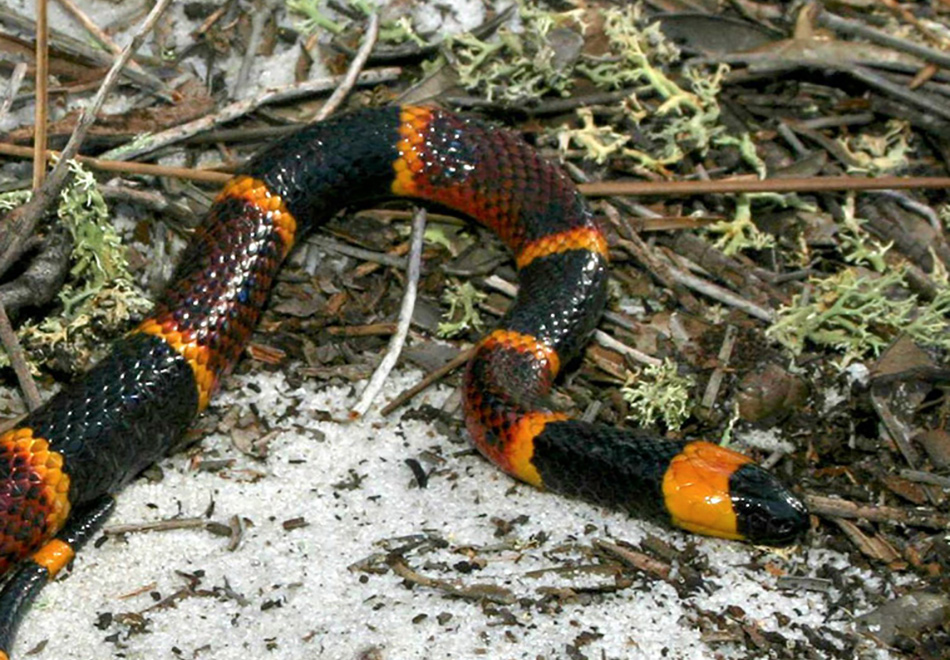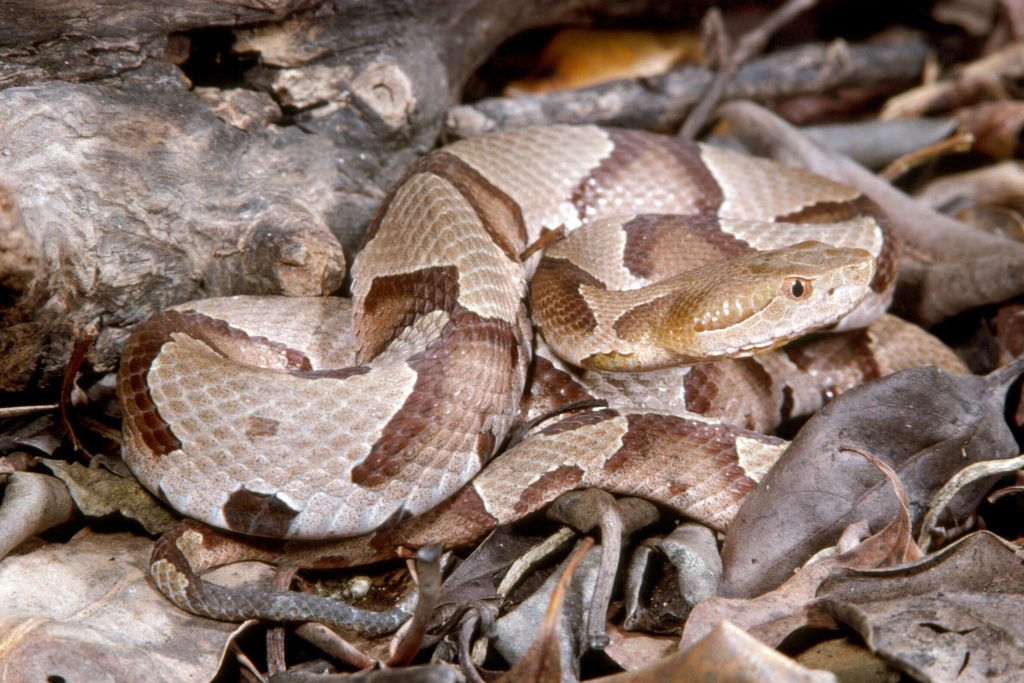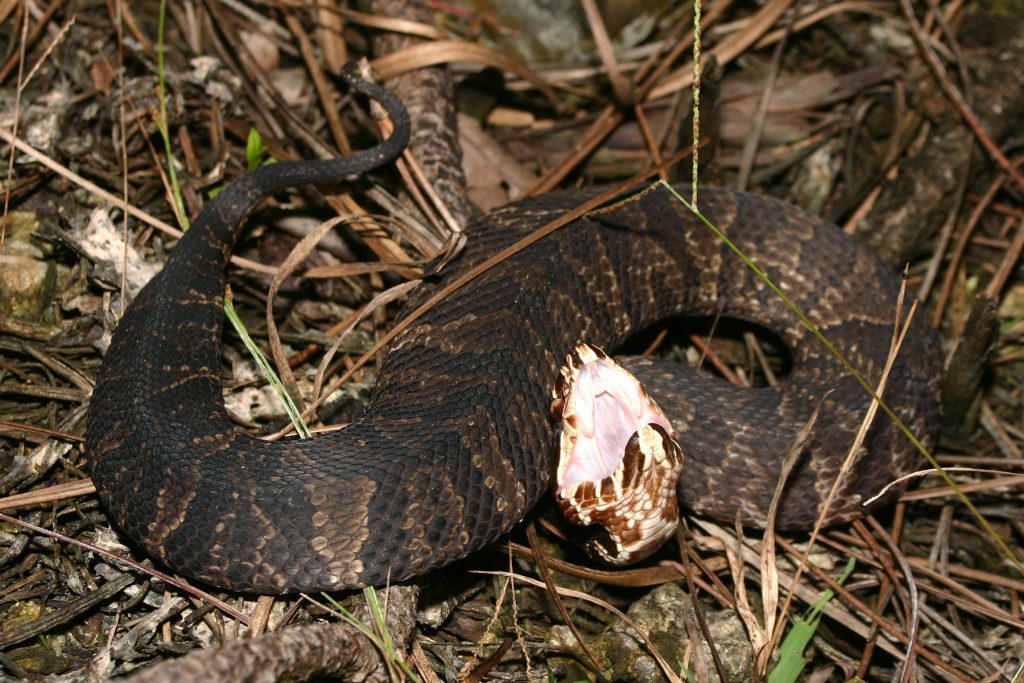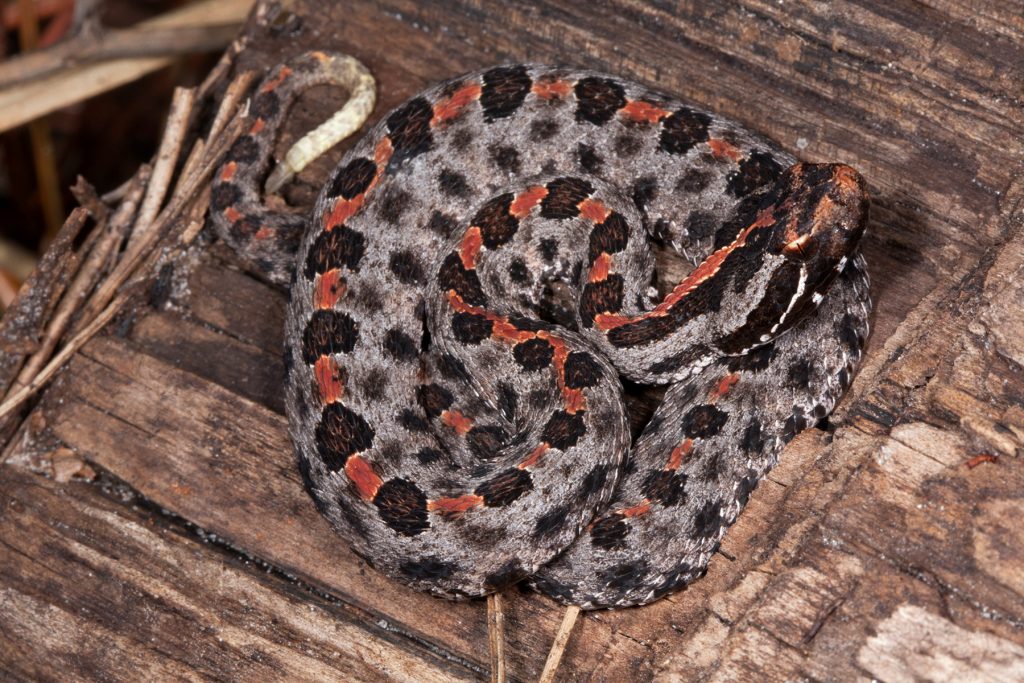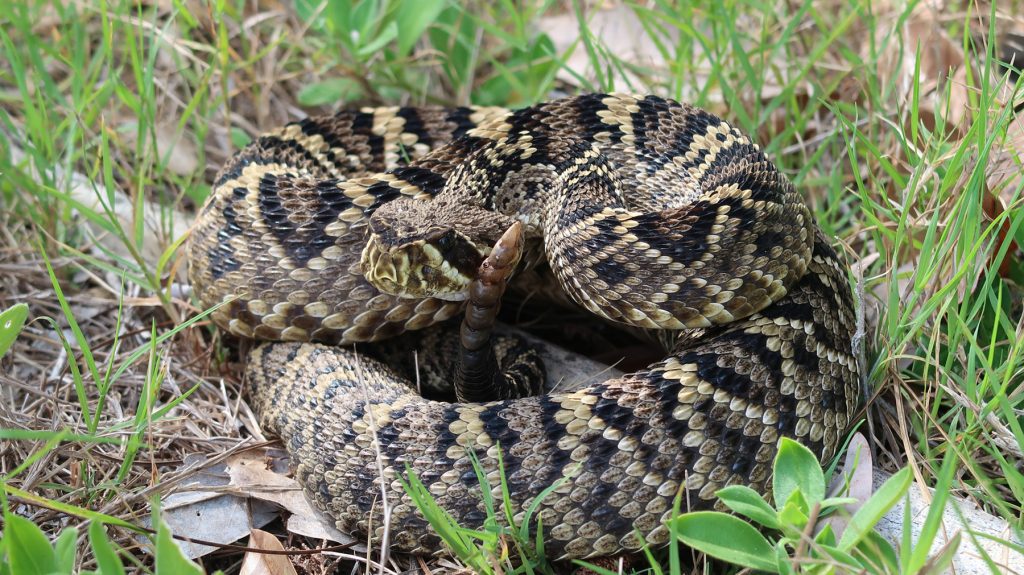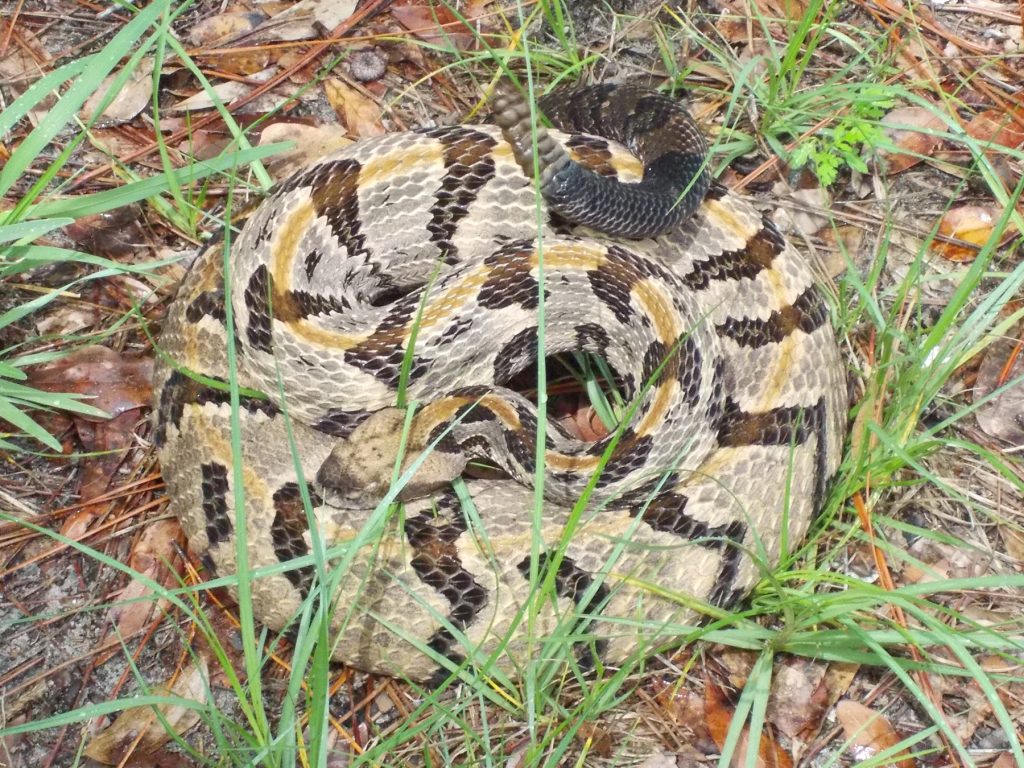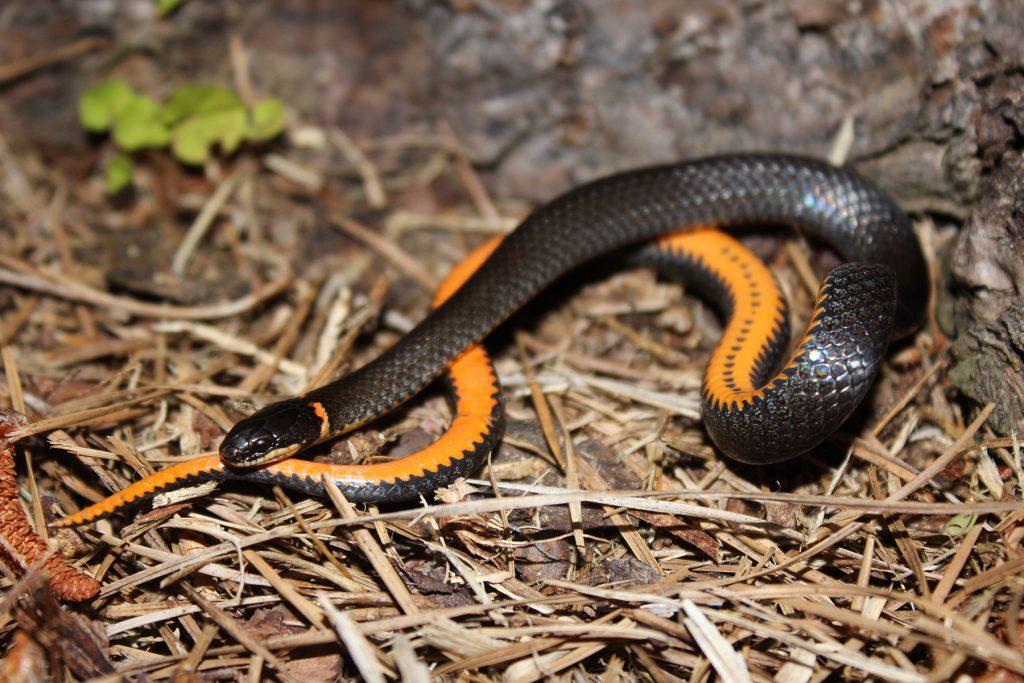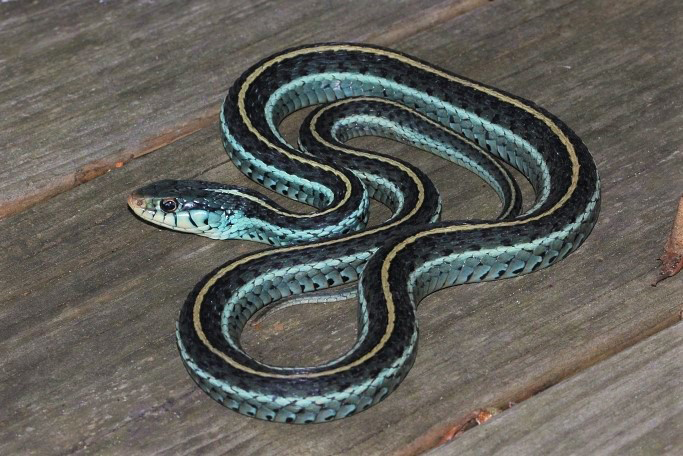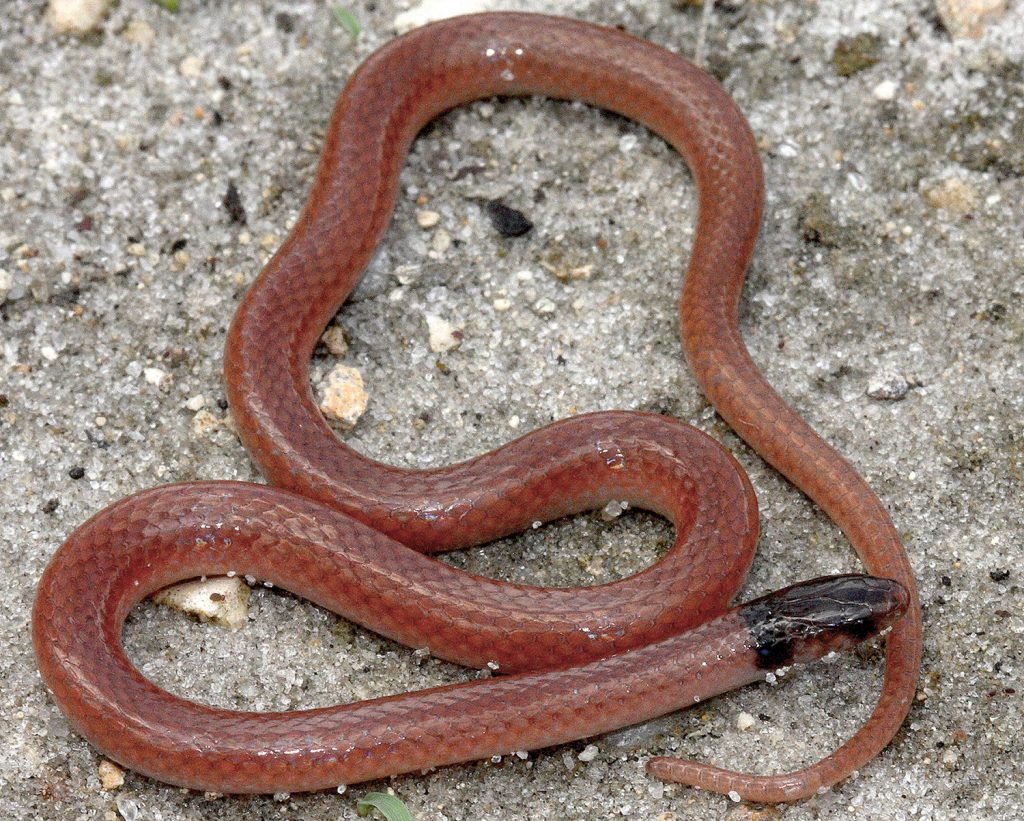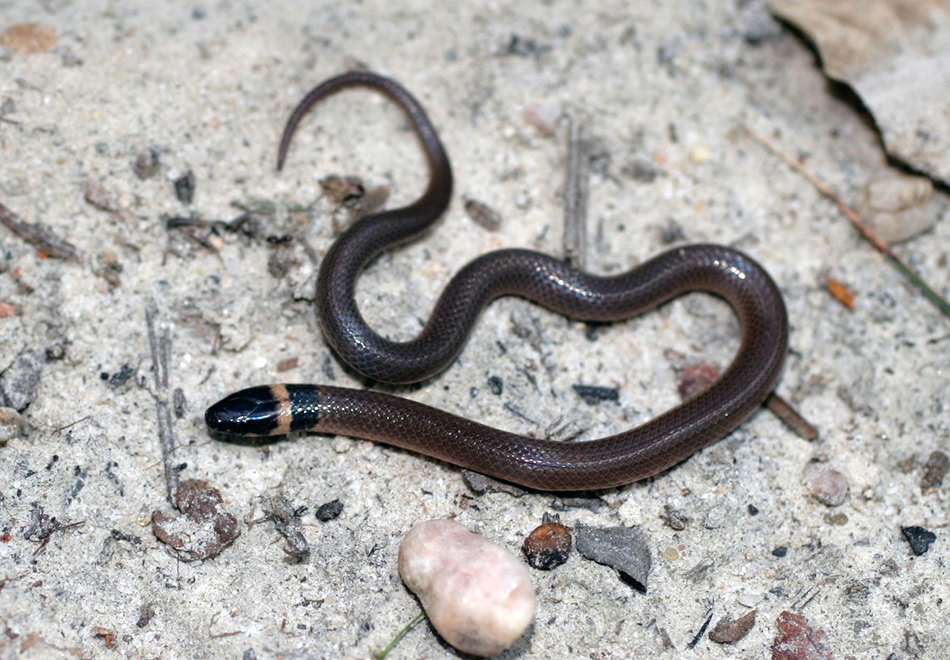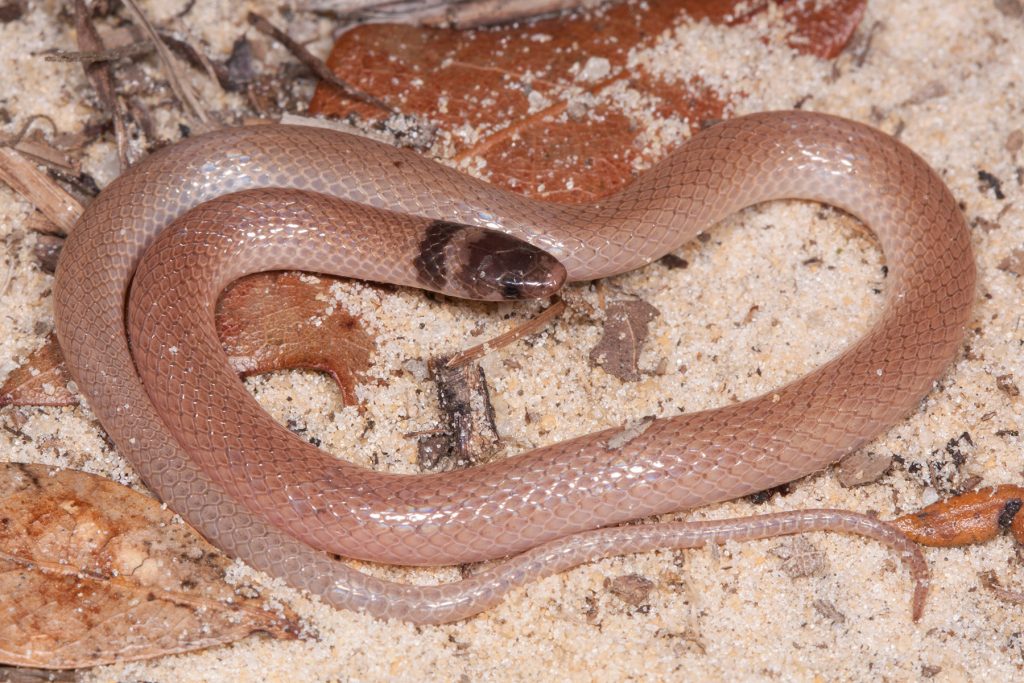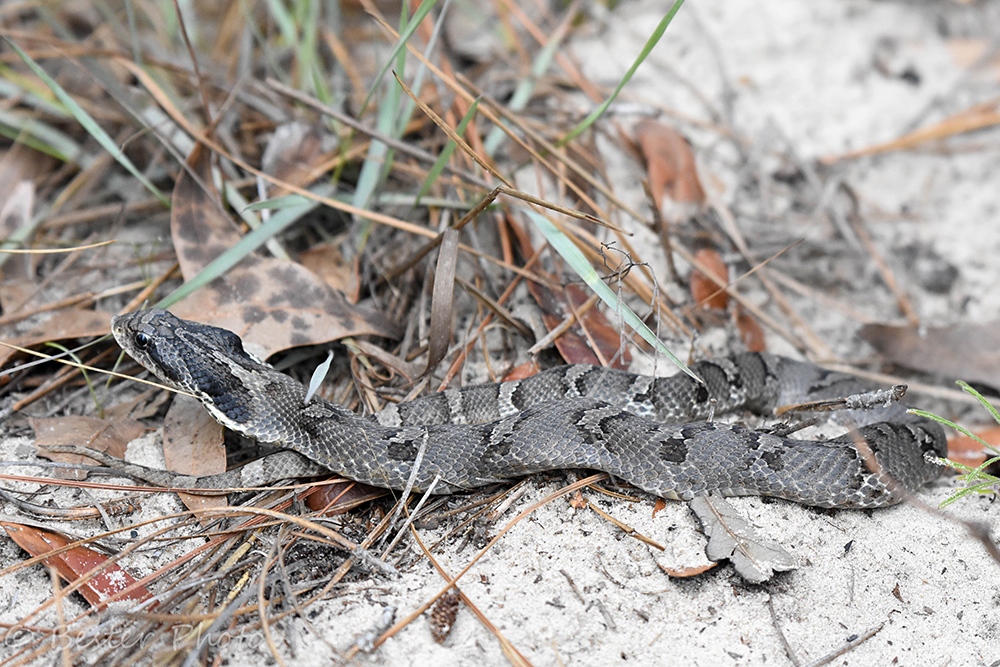When most people think of venomous snakes, they think of species that have the capability of inflicting severe pain or death to those unfortunate enough to be bitten.
In Florida, we have six such species: the Harlequin Coralsnake, the Eastern Copperhead, the Florida Cottonmouth, the Pygmy Rattlesnake, the Timber Rattlesnake, and the Eastern Diamond-backed Rattlesnake. In this usage, the distinction between venomous and non-venomous snakes has a practical benefit relating to safety of people and pets.
Dangerous to people and pets
Technically speaking, however, the distinction between what snakes are venomous and non-venomous is more complicated. This is because many snake species that are normally considered “non-venomous”, in the sense that a bite would likely not do serious harm to a human, do actually produce some venom. Examples of these species include Ring-necked snakes, Common Gartersnakes, Crowned snakes, and Hog-nosed snakes. Most people are unaware of this for several reasons. First, the venom is extremely weak and produced in tiny amounts, so they may only be capable of relaxing small prey items such as centipedes, earthworms, or toads. Second, many of these snake species never or only rarely bite people, even in self defense. Third, the production of these venoms is likely stimulated only by the presence of prey. Therefore, although these snake species do produce venom, they pose no danger to people or pets. On rare occasions, bites from these species can produce localized swelling and discomfort in some people.
For this guide to the identification of snakes in Florida, we divide snakes into the traditional categories of venomous and non-venomous to address potential health risks to people and pets. However, because we also aim to present technically accurate information, when relevant we also mention in the accounts of “non-venomous” species whether they produce weak venom even if they are harmless to people and pets.
